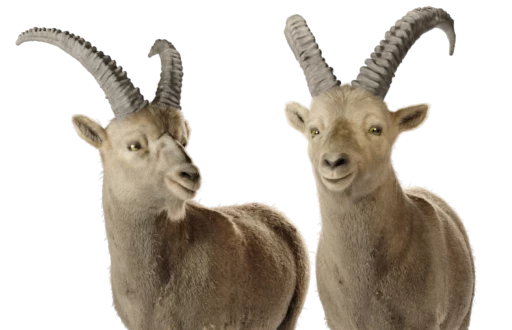Innovation and talent.
On milling machinery and trout
Clau Deplazes was born in Graubünden and has lived there happily all his life – nowhere else could he find such an ideal combination of work and leisure.
The milling machines in the workshop create a cacophony akin to a combination of screaming children, an orchestra tuning its instruments and a dying cat. They keep interrupting Clau Deplazes as we talk, but he is not the kind of man who lets something like that bother him. He takes time constructing his sentences, radiating the optimistic composure of someone who knows you can always find a solution if you just work carefully and patiently. To a certain extent, that is his job at Polycontact.
The fossil of Polycontact
Clau works on the development and construction of sample parts. He finds solutions for how a specific part, which contains the electronics to detect whether car drivers and passengers are wearing a seat belt, can be milled from a block of plastic. Polycontact supplies this highly specialised product to many of the world’s leading car manufacturers.
“Fly fishing is about much more than just pulling the fish out."
In the company’s 60-year history, business has not always been as good as it is today. Clau remembers times when he was the only one in the workshop because so many of his colleagues had left the company. Once, he even started doing a stock take. He has worked for Polycontact for 23 years – “a fossil”, as he says. He explains why he has never left, and has no plans to, in the charmingly taciturn style of a Graubünden native: “Why would I leave? I like it here.” And this is despite the 45-minute drive between his home in Surrein, where he lives, and the company in Chur. Or perhaps that is even part of the appeal. “Especially when the kids were younger, the commute was actually pretty important for me. It allowed me to completely leave work behind on the way home, so I could really enjoy my time with my family in the evenings.”
Improve fishing
You can see his children, now grown up, among the photos behind Clau’s workspace at the computer in the middle of the workshop. Two pictures stand out. One is of Clau holding a large fish with yellow fins glistening in the Mongolian afternoon sun, and the other shows a blue ’67 Chevrolet (“Almost as beautiful as the trout”). The picture of him was taken on his last trip with four fly-fishing friends. When the talk turns to his passion, his eyes light up. He got into fishing through his uncles, the husbands of his mother’s three sisters, who lived in other parts of Switzerland but travelled to Graubünden to fish. Clau liked going fishing but always thought there must be a better way to do it, something a little more refined, more natural.
Well, did we catch you? You will find our vacancies on our homepage.
He found what he was looking for in fly fishing, and took a course. But even then, he still wanted to find a way to improve the process of fly fishing, so he did some research and kept coming across references to the old tradition of home-made bamboo rods. Eventually, curiosity won out and he contacted one of the few experts in the field, who taught him the art of building rods for about a year. The process doesn’t begin with the rod itself, but with the reel – and this is where Clau’s training as a toolmaker came in very handy. And Polycontact once again proved to be the ideal place to work – the machines are ideal for milling some parts, such as the various reels, and Managing Director Hanspeter Gauer likes it “when the company can help out with such fascinating hobbies”.
A rod with a soul
In the two years since he learnt how to make bamboo rods, Claus has made five of them. It is a long and complex process that takes around 60 hours in total. “Each one is unique, both in terms of their use – one is better for windy days, another for fish that are tricky to catch – and their look,” he explains. “Each rod is like a painting.” And then there are the self-tied flies: Clau spent countless hours studying the insects he imitates. This knowledge enables him to use his bamboo rod, which unlike plastic “just has the right feel”, to react to the smallest changes in his surroundings and reel the fish in gently. Usually he releases them again afterwards – out of gratitude. “The fish gives you this beautiful, almost instinctive experience,” says Clau. “Fly fishing is about much more than just pulling the fish out. You observe the natural world, interact with it, spend time in the most beautiful places.”
For him, those places in Graubünden are the Greina Plateau and Val Sumvitg, or “Little Canada”, as it is also known. But when he tries to describe the natural beauty of this area, Clau’s face really does say more than a thousand words ever could.
